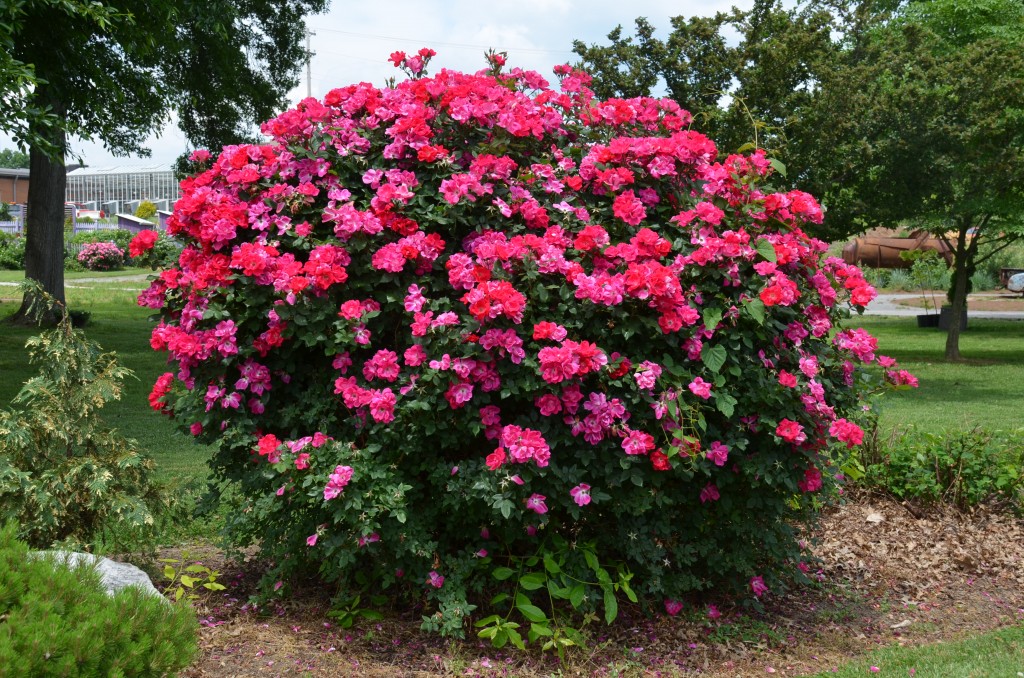Roses should be planted 4 feet apart on a garden site that receives 6 to 8 hours of sun. The garden soil must be well-drained and pH between 6.0 and 6.5. Prevent disease problems by providing good air movement between plants and not crowd them.
Spring thru mid- summer is an ideal period to plant roses to allow their roots to grow deep before winter arrives. Dig a wide planting hole 2 to 3 times that of the container root ball. Tease (gently pull apart) root ball to spread the roots prior to setting and refilling the hole. Planting depth of the root ball should be same or slightly less than it grew in the container. Backfill the hole with soil and water thoroughly.
Apply 2-3 inch layer of loose organic mulch to conserve soil moisture and to reduce potential weed infestations. Do not pile mulch around base of the rose trunk. Irrigate roses regularly (usually weekly) until the plant(s) become well established, usually within 4-6 months. Provide an average of one inch of water per week from natural rainfall and irrigation.
Fertilize roses with a water-soluble fertilizer monthly from early spring (March) until September 15 (and no later in USDA hardiness zones 6 and 7). Use a water soluble fertilizer such as Miracle-Gro™, Nature’s Source™ or Rose-tone™ according to package directions. Another feeding alternative is a slow release fertilizer specifically for roses in early spring. Or apply a granular fertilizer such as 10-10-10 or equivalent in early spring and a second time in late June.
Prune the dormant rose plant in late winter to early spring. Remove all dead or damaged wood; take out weak and tangling interior branches for better air circulation. Every 2 or 3 years remove about one third of the old branches to stimulate new growth and to maintain the rose at a desired height and spread.


 Posted in
Posted in 
